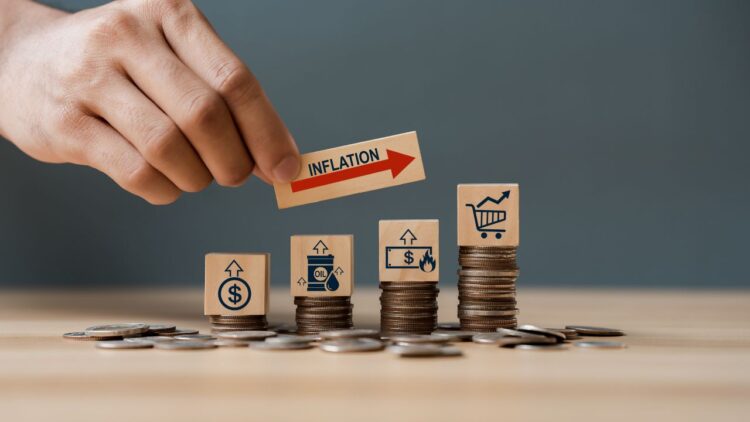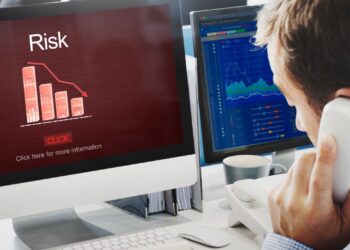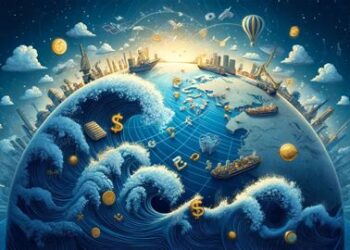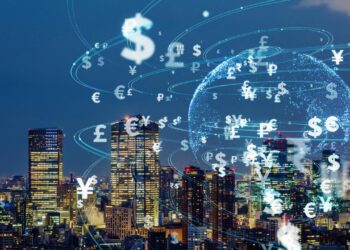The specter of inflation has loomed large over global economies in recent years, becoming a central topic of discussion among policymakers, investors, businesses, and households alike. Far from a mere abstract economic concept, inflation directly impacts purchasing power, investment returns, and overall economic stability. Understanding its underlying causes, current dynamics, and potential future trajectories is paramount for navigating the complex financial landscape. This extensive analysis delves deep into the multifaceted phenomenon of inflation, exploring its historical context, the contemporary factors fueling its rise, its pervasive effects, and the various strategies being employed to mitigate its impact, ultimately forecasting what the future might hold.
The Roots of Inflation
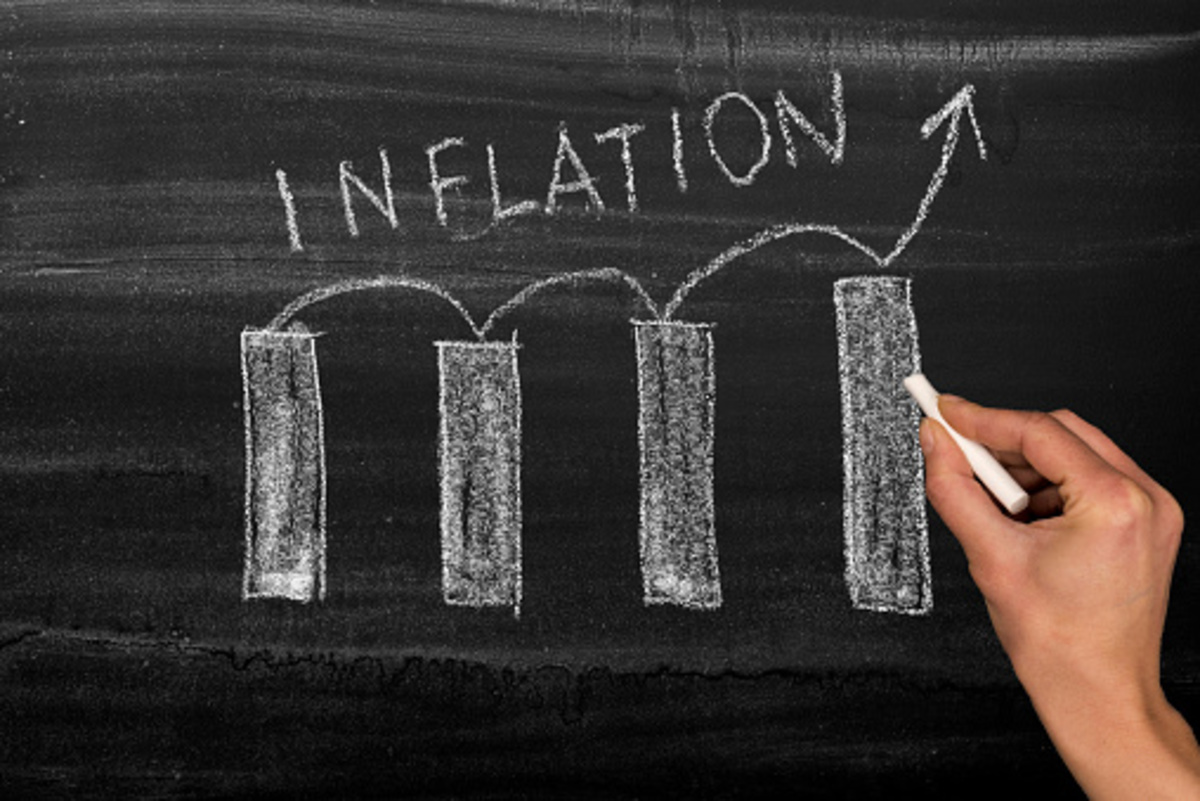
To comprehend the present and anticipate the future of inflation, it’s crucial to grasp its fundamental mechanisms. Inflation, in essence, signifies a sustained increase in the general price level of goods and services in an economy over a period, leading to a decline in the purchasing power of money.
A. Demand-Pull Inflation: This occurs when aggregate demand in an economy outstrips the available supply of goods and services. Too much money chases too few goods. Factors contributing to demand-pull inflation include:
1. Increased Consumer Spending: Boosted by wage increases, tax cuts, or consumer confidence.
2. Expansionary Monetary Policy: Central banks injecting more money into the economy through lower interest rates or quantitative easing.
3. Government Spending: Large-scale government expenditures, especially unfunded ones.
B. Cost-Push Inflation: This arises from an increase in the costs of production for goods and services. Businesses pass on these higher costs to consumers in the form of higher prices. Key drivers include:
1. Rising Raw Material Costs: Increases in the price of commodities like oil, metals, or agricultural products.
2. Wage Increases: When labor costs rise significantly, especially if not matched by productivity gains.
3. Supply Chain Disruptions: Events that limit the availability of goods or components, driving up prices due to scarcity.
C. Built-In Inflation (Expectations-Driven): This type of inflation is a result of past inflation. If people expect prices to rise, they demand higher wages, and businesses raise prices in anticipation of higher costs. This creates a self-fulfilling prophecy, making inflation persistent.
1. Wage-Price Spiral: Workers demand higher wages to compensate for rising prices, leading businesses to increase prices further to cover higher labor costs, creating a continuous loop.
2. Inflationary Psychology: A general expectation among consumers and businesses that inflation will continue, influencing their spending and pricing decisions.
D. Monetary Factors: The quantity theory of money posits that inflation is fundamentally a monetary phenomenon. If the money supply grows faster than the rate of economic output, more money chases the same amount of goods, leading to higher prices. Central banks play a pivotal role in managing the money supply through various tools.
A Confluence of Factors
The inflationary pressures experienced globally in the post-pandemic era were a complex interplay of the factors mentioned above, often exacerbated by unique circumstances.
A. Pandemic-Induced Supply Shocks: The COVID-19 pandemic severely disrupted global supply chains. Lockdowns, factory closures, labor shortages, and logistical bottlenecks drastically reduced the supply of goods, leading to immediate price increases due to scarcity (cost-push). The impact was particularly acute in sectors like semiconductors, automobiles, and shipping.
B. Robust Demand Rebound: As economies reopened, pent-up consumer demand, fueled by government stimulus checks and savings accumulated during lockdowns, surged (demand-pull). This strong demand met constrained supply, creating significant inflationary pressure.
C. Fiscal and Monetary Stimulus: Governments worldwide implemented unprecedented fiscal stimulus packages to support economies during the pandemic. Central banks, in parallel, maintained ultra-low interest rates and engaged in quantitative easing, injecting vast amounts of liquidity into the financial system. While necessary to prevent a deeper recession, this substantial influx of money contributed significantly to demand-pull inflation.
D. Geopolitical Events: The conflict in Ukraine, for instance, triggered a sharp increase in energy and food prices. Russia is a major supplier of oil and natural gas, and both Russia and Ukraine are significant agricultural exporters. Disruptions to these supplies sent shockwaves through global commodity markets, contributing significantly to cost-push inflation.
E. Labor Market Dynamics: In many developed economies, labor shortages emerged as a key issue. This was driven by factors like early retirements, shifts in worker preferences, and immigration restrictions. The tight labor market led to significant wage growth, contributing to cost-push and potentially built-in inflation.
F. Housing Market Boom: Low interest rates and increased demand for larger living spaces during the pandemic fueled a strong housing market in many regions. Rising housing costs, whether through rents or mortgage payments, directly impact consumer price indices and broader inflation expectations.
Pervasive Impacts of Inflation
The effects of inflation are far-reaching, influencing every facet of an economy and impacting various stakeholders differently.
A. Erosion of Purchasing Power: The most direct and noticeable impact of inflation is the decline in the purchasing power of money. Every dollar buys fewer goods and services than before, effectively making people poorer unless their incomes rise commensurately. This disproportionately affects fixed-income earners and those whose wages lag behind inflation.
B. Reduced Savings Value: Inflation erodes the real value of savings. If the inflation rate is higher than the interest earned on savings, the purchasing power of those savings diminishes over time. This incentivizes spending over saving and can discourage long-term financial planning.
C. Investment Uncertainty: High and volatile inflation creates uncertainty for investors. It complicates financial planning and makes it difficult to assess the real returns on investments. Assets that do not keep pace with inflation may see their real value decline, prompting a shift towards inflation-hedging assets.
D. Higher Borrowing Costs: In response to inflation, central banks typically raise interest rates to curb demand. This makes borrowing more expensive for consumers (mortgages, personal loans) and businesses (investment loans), potentially slowing down economic activity and hindering growth.
E. Wage-Price Spirals and Economic Instability: Persistent inflation can trigger wage-price spirals, leading to a cycle of rising wages and prices that is difficult to break. This can lead to economic instability, unpredictable price changes, and erosion of public trust in monetary policy.
F. Impact on International Competitiveness: If a country’s inflation rate is significantly higher than its trading partners, its exports become more expensive and imports cheaper, potentially leading to a trade deficit and currency depreciation.
G. Redistribution of Wealth: Inflation can redistribute wealth. Debtors benefit as the real value of their debt diminishes, while creditors lose. It also tends to favor those with assets that appreciate in value (like real estate or certain commodities) over those holding cash or fixed-income assets.
Central Banks on the Frontline
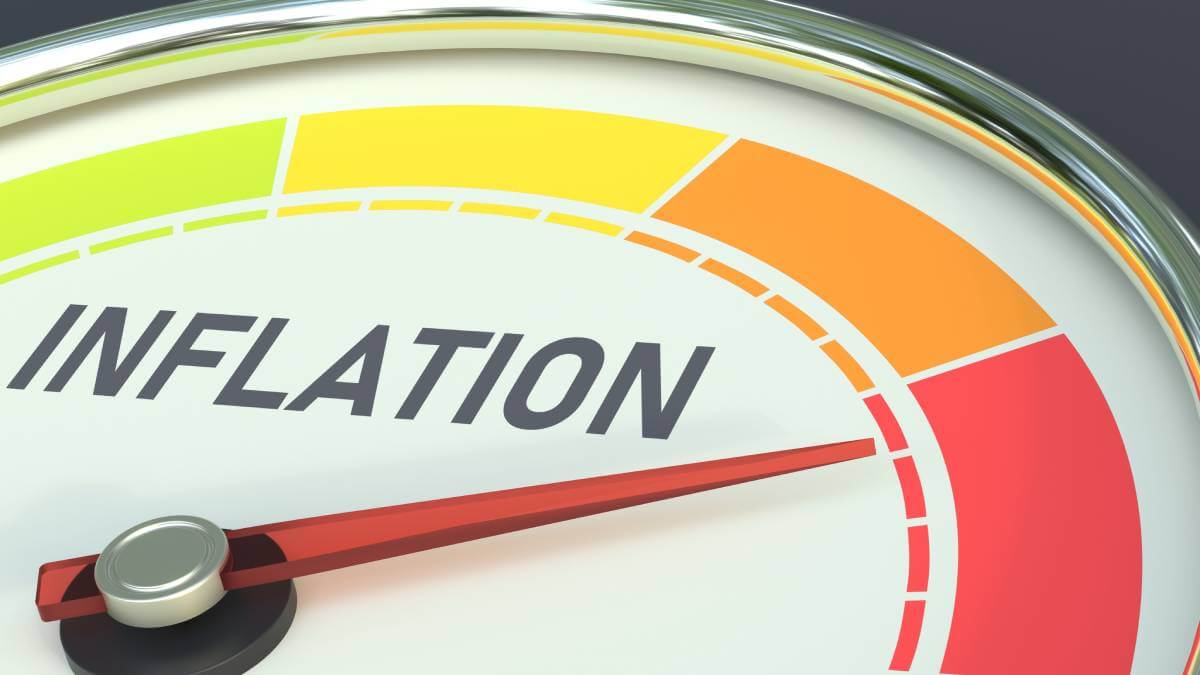
Central banks are the primary institutions tasked with managing inflation, typically through monetary policy. Their primary tool is the manipulation of interest rates.
A. Interest Rate Hikes (Monetary Tightening): The most common response to high inflation is for central banks to raise their benchmark interest rates. Higher interest rates make borrowing more expensive, discouraging spending and investment, thereby cooling down aggregate demand. This aims to bring demand more in line with supply and reduce inflationary pressures. The speed and magnitude of these hikes are critical and often subject to intense debate.
B. Quantitative Tightening (QT): Following periods of quantitative easing (QE), central banks may engage in QT, which involves reducing the size of their balance sheets by selling off government bonds and other assets. This effectively withdraws liquidity from the financial system, putting upward pressure on interest rates and dampening demand.
C. Communication and Forward Guidance: Central bank communication about their inflation outlook and future policy intentions (forward guidance) plays a crucial role in managing inflation expectations. Clear and consistent communication can anchor expectations, helping to prevent built-in inflation from taking hold.
D. Fiscal Policy’s Role: While monetary policy is the primary tool, fiscal policy (government spending and taxation) also plays a significant role. Governments can complement monetary tightening by reducing their own spending or raising taxes to cool demand. However, fiscal policy is often influenced by political considerations and can be less agile than monetary policy.
E. Supply-Side Measures: Addressing cost-push inflation may require supply-side policies. Governments can invest in infrastructure, reduce regulatory burdens, promote competition, and support innovation to improve productivity and expand the economy’s productive capacity over the long term, thereby mitigating future inflationary pressures.
What’s Next?
Forecasting inflation is notoriously challenging due to the multitude of interconnected factors at play. However, based on current trends and economic models, several potential scenarios and trajectories can be envisioned.
A. Scenario 1: Gradual Disinflation and Soft Landing: This is the most desired outcome for central banks. In this scenario, aggressive monetary policy (interest rate hikes) successfully cools demand without triggering a deep recession. Supply chains continue to normalize, commodity prices stabilize, and inflation gradually returns to central banks’ target levels (typically around 2%). This would involve a period of slower economic growth but avoid a significant downturn.
B. Scenario 2: Persistent High Inflation: This scenario suggests that inflation remains stubbornly elevated above target levels for an extended period. This could be due to several factors:
B.1. Entrenched Inflation Expectations: If the public and businesses become convinced that high inflation is here to stay, it becomes built-in, making it harder to dislodge.
B.2. Continued Supply Shocks: New geopolitical events, climate-related disruptions, or unforeseen supply chain issues could re-ignite cost-push pressures.
B.3. Strong Wage Growth: If wage growth continues to outpace productivity gains, it will sustain inflationary pressures.
B.4. Insufficient Policy Response: If central banks are perceived as not being aggressive enough, or if fiscal policy remains too expansionary, inflation could persist.
C. Scenario 3: Stagflation: This is a particularly challenging scenario characterized by high inflation, slow economic growth (or recession), and high unemployment.41 It’s a combination that central banks find difficult to combat as actions to fight inflation (raising rates) can worsen economic stagnation, and actions to stimulate growth can worsen inflation. This can occur if supply shocks are severe and long-lasting, while demand is simultaneously weak.
D. Scenario 4: Deflationary Pressures: While less likely in the immediate future given recent trends, a severe global recession or a significant and sustained collapse in demand could theoretically lead to deflation (a sustained decrease in general price levels). Deflation can be even more damaging than inflation, leading to deferred spending, increased real debt burdens, and a deflationary spiral.
E. Long-Term Structural Shifts: Beyond the immediate cycle, long-term structural factors could influence inflation:
1. Deglobalization and Reshoring: A move away from highly optimized global supply chains towards more localized production could increase costs and exert upward pressure on prices.
2. Demographic Changes: Aging populations in many developed countries could lead to labor shortages and higher wage pressures.
3. Climate Change and Green Transition: The transition to a greener economy could involve significant upfront investment costs and potentially higher energy prices in the short to medium term.
4. Technological Advancements: Conversely, rapid technological advancements, especially in AI and automation, could significantly boost productivity and potentially exert disinflationary pressures in the long run by lowering production costs.
F. The Role of Central Bank Credibility: The credibility of central banks in fighting inflation is paramount. If central banks are perceived as committed and effective, inflation expectations remain anchored, making their job easier. Loss of credibility can make inflation much harder to control.
Mitigating Inflation’s Impact
Regardless of the broader economic trajectory, individuals and businesses can adopt strategies to mitigate the adverse effects of inflation.
A. For Individuals:
1. Invest in Inflation-Protected Assets: Consider assets like Treasury Inflation-Protected Securities (TIPS), real estate, commodities, or dividend-paying stocks, which tend to perform better during inflationary periods.
2. Review Spending Habits: Identify areas where spending can be reduced or optimized to compensate for rising prices.
3. Negotiate for Wage Increases: Seek to ensure that wage growth keeps pace with or exceeds the inflation rate to maintain purchasing power.
4. Reduce Debt with Variable Interest Rates: High inflation often leads to higher interest rates, increasing the cost of variable-rate debt. Prioritizing repayment of such debt can be beneficial.
5. Diversify Investments: A diversified portfolio across various asset classes can help cushion against the impact of inflation on specific sectors.
B. For Businesses:
1. Cost Management and Efficiency: Focus on improving operational efficiency, optimizing supply chains, and finding ways to reduce production costs to absorb some of the inflationary pressure rather than passing it all to consumers.
2. Dynamic Pricing Strategies: Implement flexible pricing models that allow for quicker adjustments to reflect rising input costs.
3. Hedging Strategies: Use financial instruments to hedge against rising raw material or energy costs.
4. Invest in Productivity-Enhancing Technology: Adopting automation and advanced technologies can improve productivity, offsetting rising labor costs and dampening inflationary pressures over time.
5. Strengthen Supply Chain Resilience: Diversify suppliers and build more robust, localized supply chains to reduce vulnerability to global disruptions.
6. Maintain Strong Customer Relationships: Transparent communication about price adjustments and focusing on value can help retain customers during inflationary times.
Conclusion
Inflation remains a formidable challenge and a central preoccupation for the global economy. Its recent surge was a complex concoction of demand-side stimulus, supply-side shocks, and geopolitical events. While many economies have seen inflation cool from its peaks, the path back to target levels is far from straightforward. The interplay between monetary policy, fiscal actions, global supply chain resilience, and geopolitical stability will determine whether economies achieve a soft landing with gradual disinflation or face more challenging scenarios like persistent high inflation or even stagflation.
For individuals, businesses, and policymakers, vigilance, adaptability, and a proactive approach are paramount. Understanding the nuanced drivers of inflation and the potential policy responses will be key to making informed decisions. The future of inflation is not predetermined; it will be shaped by the collective actions of central banks, governments, and economic agents worldwide. As we move forward, the ability to anticipate and respond effectively to inflationary pressures will define economic success in an increasingly interconnected and volatile global landscape.

